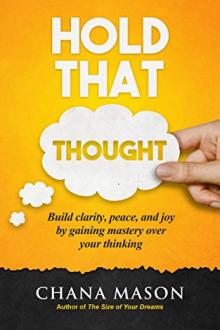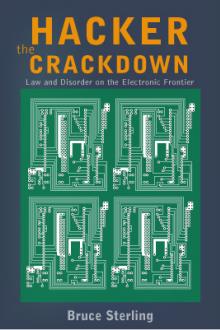Hold that Thought by - (the reader ebook TXT) 📖

- Author: -
- Performer: -
Book online «Hold that Thought by - (the reader ebook TXT) 📖». Author -

Copyright © 2019 by Chana Mason
All rights reserved.
So if you’re considering claiming any of my work is yours, hold that thought. If you’re pondering copying or distributing its contents without the author’s express permission, think again. If you want to quote the book, share what you’ve learned, lend it to a friend, use its tools in your counseling or coaching practice, or blab about it on your show or podcast, you’re thinking in the right direction.
Learn more at Hold.ChanaMason.com
ISBN: 978-1-62393-010-3
For my mom, Lucy Gateño, for believing in me even when I didn’t.
Here’s the good news: we are all, yourself included, innately whole and healthy. Sometimes there’s a barrier stifling our natural vibrancy and mental clarity. More often than not, what’s holding us back is a thought or belief. Through Inquiry, a process of asking truth-seeking questions, we can zoom out and question our beliefs and the suffering they cause. Once we identify a given thought, disentangle our mind from it, and observe it from the outside, we can find our way back to ourselves.
Most of our beliefs live in the submerged bulk of our subconscious mind. The focus of Inquiry is to flash as bright a light on that bulk as possible, question the veracity of our thinking, and chose beliefs that bring us more clarity and joy. In this book, I’ll share tools that enhance this light. You can use them to facilitate your own Inquiries with a notebook in hand, in processing your thoughts with a friend, or in a therapeutic setting as a coach or counselor.
In the first section of this book, Thought Collection, we’ll explore tools to identify the thoughts causing our distress. In the second section, Words to Suffer By, we’ll shine a light on the language patterns that lead us down dark alleyways of consciousness. The third section, Reaction Contraction, will help us understand our reactions to our thinking and how those reactions can lead to even more destructive beliefs. In the fourth section, A Fresh Pair of Lenses, we’ll explore how our limiting beliefs conceal lessons that can help us become better human beings.
The dialogues in this book are either approximated transcripts or piecemeal collection of actual conversations with clients. All names and identifying characteristics have been changed to protect their privacy.
I’ve had workshop participants with advanced degrees in psychology balk at the simplicity of Inquiry—it’s hard for them to imagine that their clients can find healing from a handful of simple questions—but I’ve seen clients dealing with everything from panic attacks to eating disorders find peace and light-heartedness just by questioning their thinking.
I bless you to trust that everything we need to find happiness is already within us. By asking questions, we create a space for gems of understanding to bubble up to the surface, leading us toward understanding, compassion, peace, and joy.
If you have benefited from any of the teachings shared in this book, or if you have tools or insights of your own, I would love to hear from you.
Wishing you many joys,
Chana Mason
Jerusalem, Israel
Visit my site at ChanaMason.com
You can email me at ChanaMason@gmail.com
My first thought was always a cigarette. It still is, but I haven’t cheated.
—Frederik Pohl
“I don’t get this Inquiry thing,” I told my friend, Noga. “Why would I want to change my mind about something that is absolutely true?” “What do you mean?” she asked.
About an hour before, I was standing at a bus stop waiting for my 5-year-old to arrive on his bus home from kindergarten. A few others were also at the stop, but I only paid attention to one of them: a guy in his 20s wearing brown pants, a loose shirt, and headphones. He was smoking a cigarette. Right there, at my bus stop. The nerve!
I stared at this guy and seethed. How could he stand next to a whole bunch of people and smoke like that? How could he infest us all with his second-hand poison? Didn’t he know about the Surgeon General’s warning? Didn’t he know how bad smoking was for him?
If I were a cartoon character, smoke would’ve been billowing out of my ears, and the top of my head would’ve shot up like the lid of a pressure cooker. As soon as my son got off his bus, we dashed home, and I stomped over to Noga’s.
“So,” she asked, “What do you believe about the situation that got you so angry?”
“What do you mean, what do I believe? The guy was smoking. It was so disgusting!”
“So you think he shouldn’t have been smoking?” “Yes, exactly.”
“There you go. You believe he shouldn’t smoke. That’s why you’re all upset.”
“But he shouldn’t smoke,” I huffed. “That’s just a fact. Do you have any idea how many studies have been done showing the connection between cigarettes and cancer, heart disease, not to mention emphysema? And -”
“What you’re telling me is that you have a lot of reasons to believe your story that he shouldn’t smoke.”
“Tons.”
“But what’s the reality of it?”
I suddenly stopped in my tracks. “What do you mean?”
“What does the man actually do?”
“Oh. He smokes.”
Noga smiled. “Yes.”
“I don’t get it.”
“Why don’t we do The Work on this thought, and see if you can gain some clarity.”
Noga had recently given me Loving What Is by Byron Katie. I’d already read a bunch of Barry Neil Kaufman’s works and was drawn to the premise that thoughts shape our world, but I hadn’t internalized any of it. Not only that, I fought the idea of Inquiry like a Jerusalem cat in a turf war. There were so many things to argue about: How could my thoughts possibly not be me? How could something not be true if it feels so true? How was I supposed to not worry about things; wouldn’t that mean I didn’t care? Fortunately for me, my friend was patient.
In the chapters ahead, I’ll expound on every question and tool you see below. For now, enjoy the ride.
Noga: He shouldn’t smoke - Is it true?
This is the first question in Byron Katie’s four question process, The Work.
Chana: Yes!
Noga: Can you absolutely know it’s true that he shouldn’t smoke?
Chana: Need I mention the science again?
Noga: I’ll take that as a yes. And how do you react when you believe the thought?
Chana: I get outraged. My fists ball up. My chest gets tight.
Noga: What are you unable to do when you believe the thought?
Chana: I can’t think straight. I can’t… oh my gosh! (I slapped my forehead.) I just stood there breathing the smoke. I could have moved away or asked him to stop, but I didn’t. When I believe the thought I can’t take care of myself at all.
Noga: So whose business are you in when you believe he shouldn’t smoke?
Chana: Huh?
Noga: Were you focusing on what you can control or what he controls?
Chana: Oh. Okay. I was in his business. I can’t control whether he smokes or not.
Noga: That’s why you stood still. When you left yourself to meddle in his business, there was no one left to take care of you. Now we get to the last question. Take a deep breathe and imagine yourself at the bus stop. How would you be without the thought?
Chana: I’d be calmer. Just waiting for my son. I’d probably walk further away and then I wouldn’t have to breathe the smoke
Noga: Good. Now let’s turn it around. What’s the opposite of he shouldn’t smoke?
Chana: He should smoke? But that’s insane! I can’t believe that - it’s so unhealthy to smoke.
Noga: Why don’t you try and see if you can find a reason why it might be true?
Chana: I can’t. Help me out here.
Noga: Okay. How about, maybe if he didn’t smoke, he might use a more dangerous drug or alcohol?
Chana: I never thought of that. Maybe he’s gone through difficult stuff, and smoking helps him cope.
Noga: Exactly. Can you give me another reason?
Chana: Maybe he’s so addicted that it’s hard to stop?
Noga: One more…
Chana: Maybe he doesn’t care that it’s bad for him. Maybe he likes it.
That thought made me cringe, but I had to admit I knew smokers who loved their cigarettes more than anything.
Noga: Fantastic! You got three right there. What’s another turnaround? Try changing the subject this time.
Chana: I shouldn’t smoke? But I don’t.
Noga: And that’s one reason why you shouldn’t: because it’s not the reality. Can you give me more?
Chana: I can’t stand the smell. And smoke it makes me cough.
Noga: We could also be more creative on this one. It seems to me, that in this situation you were smoking plenty.
Chana: Me? How?
Noga: You told me you got so angry, smoke came out of your ears.
Chana: Oh, yeah.
Noga: And even though he’s long gone, you’re still thinking about him. For all we know, he hasn’t smoked the rest of the day -
Chana: But he’s chain-smoking in my head.
Noga: Exactly. And there are other things you use the way this man uses cigarettes…
Chana: (I bit my lip.) Like my phone or staying up late… or chocolate.
Noga: Maybe he’s there to teach you about your addictions. You can’t fix him, but perhaps you can stop the phone, late night, or chocolate addictions you have.
Chana: That’s so hard.
Noga: You thought it was so easy for him. (We both laughed.)
Chana: Got it. So he should smoke and I… I should work on not smoking - not him, not my addictions, not my anger.
Noga: And when you’ve got that down, you can teach me how you did it.
Chana: I don’t know if I ever will
Noga: Neither does he. Really, you’re the same.
Chana: I guess I could have more compassion for him.
Noga: That might be a kinder way to live.
That conversation was a turning point in my life. For the first time, I got a taste of how powerful it can be to question my thinking. I’ve been hooked ever since.
We are addicted to our thoughts. We cannot change anything if we cannot change our thinking
—Santosh Kalwar
If you’re like many of my clients, you sometimes find yourself feeling yucky, but not knowing exactly why. You might be able to pin down your frustration to a specific person or situation but are unclear as to what thoughts are leading you down a rabbit hole. Hopefully, by now, you’ve come to understand (though perhaps not fully live out) the truth that it is our response to life, our story about it, and not our circumstance that causes our suffering. Once you can identify the thoughts constructing your narrative, you can pull them apart, inspect them, keep what serves you, and chuck or rework what’s hurting you.
The key to working on our thoughts is nailing down exactly what they are. In this section, we’ll cover a collection of tools to help you glean the beliefs you have about a given situation or person; dig deep into uncovering your most hidden thoughts about yourself, life, and all that is sacred; and identify the ones you can work on to create the most significant shift in your emotional experience.





Comments (0)